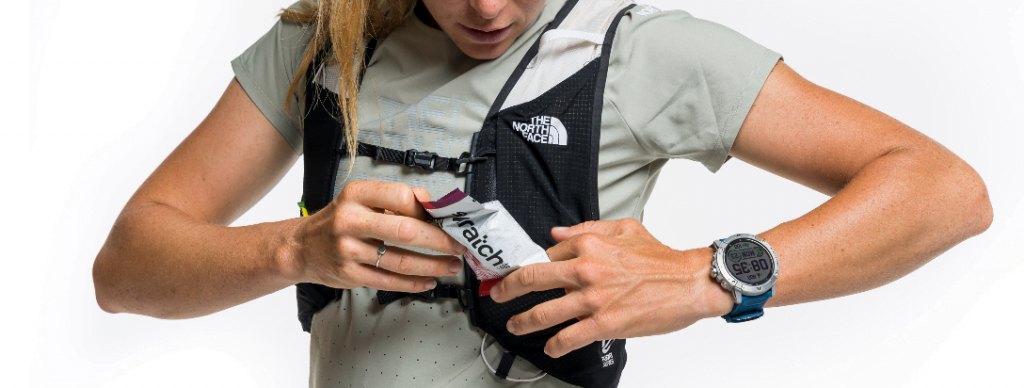 Coros Vertix 2 is a Garmin Fenix 6 Pro & Enduro Challenger – Review
Coros Vertix 2 is a Garmin Fenix 6 Pro & Enduro Challenger – Review
With maps, music, a large screen and first-of-a-kind GPS Accuracy Tech, the new Coros Vertix 2 offers enough to make a wannabe Garmin Fenix 6/Garmin Enduro owner think twice before getting the nod from their partner, this review looks at what’s new to the Coros Vertix 2 and discusses the feature compromises you make if you buy it over the much more expensive Garmin Fenix 6X Pro Solar.
Heads Up: I buy all the tech I use for my training and this is a media loaner from Coros and I’m not sponsored by Coros.
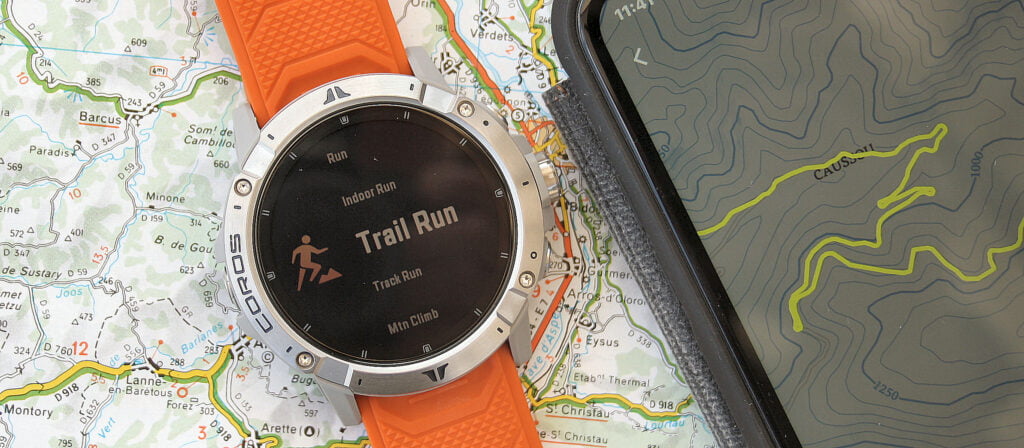
Let’s start with a summary review of the Coros Vertix 2 and those of you who want more details can use the Table of content to skip ahead to sections that interest you. Enjoy!
Coros Vertix 2 Verdict - An adventure/running/climbing watch that's worthy of your consideration around the $/£/Eu500-700 mark
Coros Vertix 2 Summary Review
The Coros Vertix 2 edges ahead of the Garmin Enduro and Suunto 9 Baro/9 Peak in several respects most notably with the inclusion of basic maps & music support. It’s definitely worthy of consideration for that level of watch.
 However, when stacked up against the more expensive Garmin Fenix 6X Pro Sapphire, the Vertix 2 clearly wins on cost but can’t compete with the depth of features on the Fenix and the maturity of its Connect platform.
However, when stacked up against the more expensive Garmin Fenix 6X Pro Sapphire, the Vertix 2 clearly wins on cost but can’t compete with the depth of features on the Fenix and the maturity of its Connect platform.
The Vertix 2 IS full of features; too many of them to list here and which range from sports profiles to physiology insights and from structured workout support to BLE power meter support. Maybe night mode, onboard ECG/SpO2, a full range of ABC sensors or an HRV test are your thing? They’re all included.
However, the Vertix 2’s standout features are the accuracy from a new dual-frequency GPS chip (and it is accurate), some clever strength & conditioning features, a track running mode, market-leading battery life and Insta 360 camera control.
Bear in mind that Coros Vertix 2 is the brand’s state-of-the-art hardware platform. remember also that Coros has announced that maps will be made available to earlier watch models and have innovated at a fantastic pace over the last 3 years. Therefore you can be confident that a Vertix 2 bought now will reap the rewards of all the new software features over the next few years.
A discount for the Coros Vertix 2 is hard to come by but you can get a free $30 accessory strap if you use the code THE5KRUNNER when you buy direct from Coros, and that’s how you support the work here…thank you.
Pros
- With notable caveats, one of the more accurate GPS watches I’ve tested
- Immense battery life…unbelievable
- Good multisport functionality
- Good physiology features – no more or less flawed than Garmin’s
- Great durability
- Good quality sensors for outdoor adventures, the compass needs a tad more love.
- Strava course support (Sep 2021, Komoot 2021)
Cons
- The large format is great for readability but limits the appeal for smaller wristed people
- The watch experience has improved, Coros needs to focus on the app too.
- Basic music only – no links to Spotify or other streaming services
- Basic, non-routable maps only but that’s Ok for most of us
- No ANT+ sensor support
Who is the Coros Vertix 2 aimed at?
Make no mistake. Coros is gunning for Garmin Fenix 6X/6 Pro Sapphire buyers and Garmin Enduro. The ‘Vertix’ name is a giveaway that another target is climbers.
So, if you are a serious adventurer-cum-runner who needs a larger format watch then Vertix 2 could be for you and, similarly, multisport athletes needing a more rugged sports watch will also be tempted.

Coros Vertix 2 Review – What’s New?
There are visual similarities to the original Vertix, however, Vertix 2 is a wholly new piece of hardware from Coros who claims that many high-quality components are used. The onboard software and app carry over a huge number of features from earlier models and add some major new ones. Try these…
- Dual-frequency GPS – For the first time EVER, a sports watch doubles up on the satellite signals it uses to deliver more accuracy. GPS, GLONASS and Galileo are used as before but this time an additional frequency is used. No Garmin Fenix watch currently has this as of Aug.21. NB: This is NOT a Sony chip.
- Sapphire glass with DLC and Titanium bezel – super durability. Comparable to the top-end Garmin Fenix with Sapphire glass (better than Gorilla glass).
- Global offline maps – free maps but no DEM or intelligent routing. Your regional TOPO maps are also free. Comparable to the top-end Garmin Fenix 6 Pro models that have similar maps. TOPO maps will also come later to existing Apex Pro and Vertix 1 owners!
- Next-generation hardware – it’s simply faster than what came before with next-generation technologies (Coros claim 20% faster)
- Large screen support – it’s the largest screen size normally available, bigger than Vertix 1 and the same as that on the 51mm Garmin Fenix 6X. The new screen supports 8 metrics per page.
- Market-leading battery life of 135 hours with per second recording and GPS – this is more than the Fenix 6X (120 hours)
- A touchscreen and digital dial together aid an improved user interaction. On top of that, a new widget menu similar to Garmin’s looks and works better than before.
- Optical HR sensor that gives ECG and HRV levels of HR accuracy
- Offline Music Support and Bluetooth headphone support – a less sophisticated music service than the Fenix 6 Pro
- WiFi Support – Coros tease that this new feature could be used to support streaming services ‘later’. Initially, it is for firmware downloads.
These are also worth highlighting
- Multi-pitch climbing mode – separately records different grades in a single climb
- HRV Index (for a waking HRV/Readiness test)
- ANT+ Support removed
- Keychain Charger, Watch carabiner and Insta 360 Camera Control
- OK, it’s not as glamorous as the more expensive Garmin Fenix with Solar charging…but it’s much cheaper.

Coros Vertix 2 – What you still get
We sometimes forget the features included in previous models and Coros DOES already have some features that Garmin lacks – and vice versa, of course.
The Vertix 2 is the top-end watch from Coros that has all the existing features including Quickfit-like straps, SpO2, EVOlab physiology features, BLE sensor support, ABC, magnetic compass, thermometer, barometric altimeter, laps, custom pool lengths, PM & native Stryd support, create & share training plans with complex structured workouts, track mode, muscle heatmap for strength & conditioning, sleep reporting, multisport…to name a few.
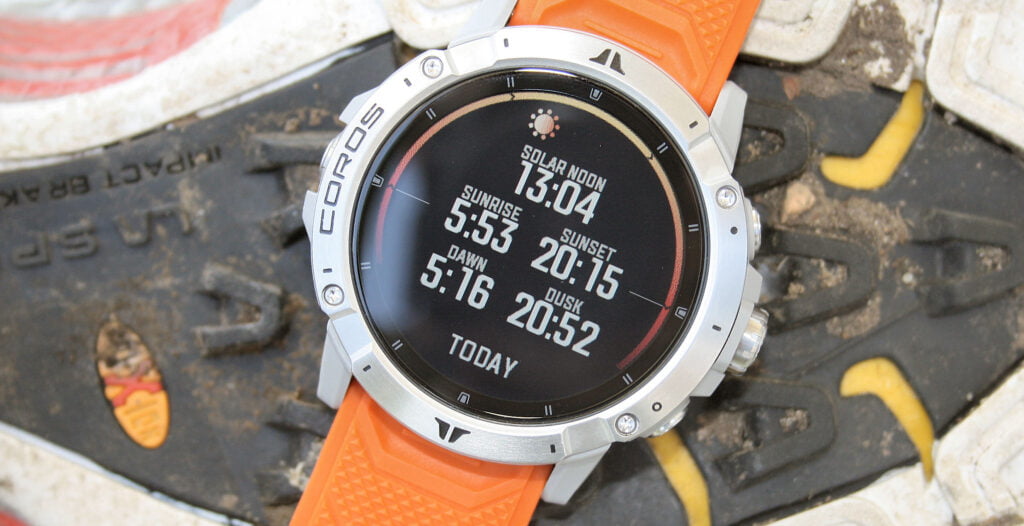
Coros Vertix 2 vs Garmin Fenix 6X Pro Sapphire – what they don’t tell you
There are subtle features and nuances available to the Garmin Fenix 6 when compared to the Vertix 2.
There are also more in-your-face differences – Fenix 6 Pro has NFC payments, supports music streaming services like Spotify and has routable maps with a DEM.
Perhaps the 3 less obvious areas where Garmin wins would be on its support for 3rd party Connect IQ apps, the Garmin Connect smartphone app experience and the number and variety of obscure metrics. Everything else could be argued back and forth as your favourite featurette will be irrelevant to someone else and their particular favourite. Perhaps the native Running power and Muscle Heatmaps for S&C are the unique Coros features for you? Perhaps not?
Unless you need a specific feature both watches tick most boxes.
The Coros Vertix 2 IS a well-specified Adventure/climbing/running/multisport watch.
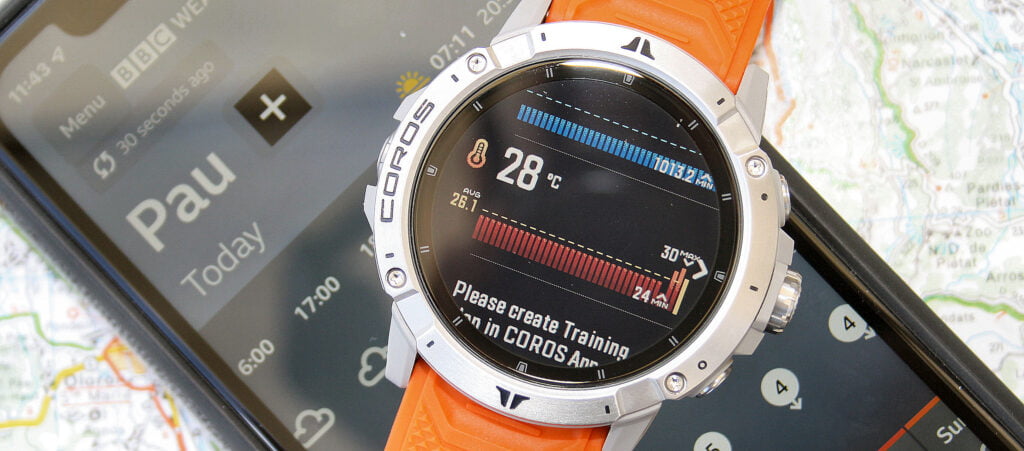
Coros Battery Life
Garmin, Coros and some others have nailed battery life. The problem is solved and the hours that can be delivered now are awesome and meet the needs of 99.9% of buyers.
In some ways, the headline 135-hour figure for continuous GPS usage sounds ridiculously good. But once you factor in turning on the ‘best accuracy’ mode and then playing some music and having the backlight on whilst you show the map, then the headline figure will soon significantly diminish. HOWEVER, it will diminish to sensible levels that you can still use for a LONG time. If you try those with other smartwatches then you’ll have a flat battery after a couple of hours. Not so the Coros.
- Daily use – 60 days
- Standard full GPS (every second) – 135 hours
- All Systems On – 90 hours
- Extra Accuracy Mode: All Systems + Dual Frequency On – 50 hours
- UltraMax GPS 240 hours
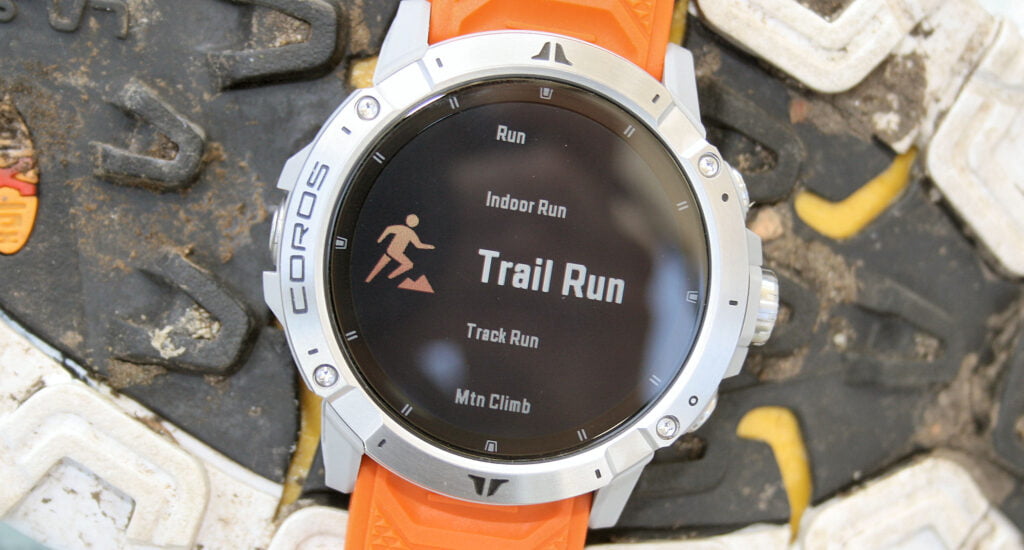
Coros Mapping
Having maps on your wrist has its pros and cons. Perhaps a handheld is better for hiking and perhaps a watch is too small to see full details. The 51mm face on the Vertix 2 represents a useful compromise where maps can be used to contextualise your outdoors experience rather than to dominate it.
Global Coros maps are included for free and it’s also great that you can sync POIs across to the watch.
Strava course support is to be added in September 2021 (Komoot, end 2021) but at launch, there was only manual support for GPX courses files that you create somewhere else and you have to manually load these onto the app so that they are synced onto the watch.
Coros shows elevation profiles from your GPX courses.
As there is no map intelligence on the watch, there is no possibility of re-routing if you make a wrong turn.
So if you have more complex routing needs, the Coros won’t be for you. However, I suspect that most of you don’t need that and merely having a decent map on your wrist gives the positional context you need to make many decisions on the ground. Indeed that was precisely the criticism of the Garmin Enduro that dcrainmaker, myself and other reviewers made earlier in the year…that watch had breadcrumb routes but no map; you need the map to add context to the breadcrumb route IMO.
So. Coros Vertix 2 is a better choice than the Enduro in some respects.
Coros Music Playback
There is support only for MP3 audio files that you have manually copied across to the watch from a PC attached by a cable.
Coros has stated that more music features are in development and hinted that these might use WiFi.
Coros Vertix 2 Review Accuracy – GNSS, HR & Elevation
Summary: Promising.
Expect to find mixed results with any new GPS chipset! However, I can say for now that you WILL see improved GPS tracks that ARE better than what we have seen before. However, there are also less frequent times when the tracks go awry. So once the firmware is fully bedded in, this should be an all-around improvement (v2.52.0813beta/v2.53Final). Edit: future firmware updates have not materially resolved the issues.
Here is some data from an older firmware that’s mostly good: Pink=Vertix, Yellow=935/HRM-PRO, Green=9Peak, Red=Apple SE, Blue=Verity Sense.
You can see the heart rate chart is good over a few intervals and the GNSS is good in a suburban housing grid. Running along a high street with the Vertix on my left wrist had good results when the Vertix was away from the buildings (3rd image) but much less good results when I crossed the road, went under some street scaffolding and had the Vertix on the building side.
More Accuracy Details: Another accuracy post showing better results with Dual-frequency turned off!
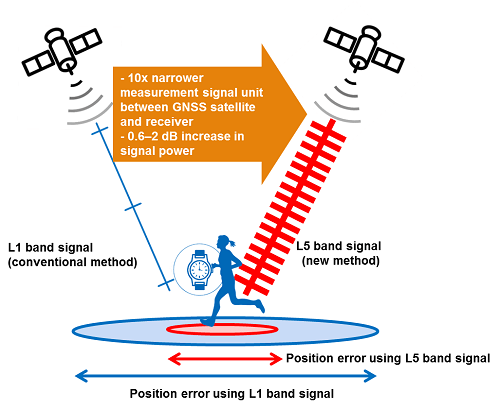
Dual Frequency Precision for GNSS/GPS
Dual Frequency signals can improve precision in difficult reception conditions, ranging from running in a canyon, cycling between tall buildings and perhaps also when navigating in forests.
I talk a LOT on this site about GPS accuracy and since mid-2020 I’ve discussed Dual Frequency chipsets too. Before that, there were false dawns as greater accuracies were promised as new constellations became supported. First GLONASS failed to deliver on the promises of greater accuracy, followed soon after by Galileo. To be fair to Garmin/Sony, they eventually sorted out their teething problems with GPS+GLONASS but the result was often only marginally better than GPS-only.
Enabling the Glonass and Galileo constellations makes more satellites available. That just means an increased likelihood of you achieving the maximum stated accuracy of +/-5m. Dual Frequency gives the prospect of greater accuracy down to +/- 1m.
Why?
Different frequencies/wavelengths refract differently through the atmosphere and reflect differently off buildings and trees. If both signal frequencies from one satellite report the same distance then you should be more certain that the stated distance is correct. On the other hand, satellite signals that report discrepancies between the signal frequencies can be temporarily ignored. Thus at any given instant, the watch can use only trusted information to get greater accuracy. That’s the theory!

High-Frequency Recording GPS Chipset
This feature is NOT YET ENABLED but the watch can make 10 readings per second (10Hz). Depending on the watch’s ability to deal with these readings, there is the possibility for more responsive navigation and this might help accuracy when you are moving at speed. If enabled this will lower battery life.
Coros Vertix 2 vs Coros Vertix 1 vs Suunto 9 Peak
Here we have the 51mm, 47mm and 44mm screens of the V2, V1 and 9 Peak respectively. Note the black rings around the usable screen area. These screen sizes correspond to those from Garmin with the Fenix 6X, 6 and 6S.

Coros Vertix 2 Specifications
These specs are here for completeness but I’ll just draw your attention to a couple of features we’ve not covered, namely, the recharge time of 2 hours and the lowest operating temperature of -22°F/-30℃. Brrrr.
| COROS VERTIX 2 Specifications | |
| Model | COROS VERTIX 2 GPS Adventure Watch |
| Display Size | 1.4 inch |
| Display Resolution | 280 x 280px (64 colors) |
| Display Type | Touch Screen Always-On Memory LCD |
| Screen Material | Sapphire Glass |
| Bezel Material | Grade 5 Titanium Alloy with PVD coating |
| Cover Material | Titanium Alloy with PVD coating |
| Watch Band | 26mm Quick Fit Band |
| Band Material | Silicone/Nylon |
| Physical Size | 50.3 x 50.3 x 15.7mm |
| Weight with Silicone Band | 91g |
| Battery Life | Standard Full GPS (every second) |
| (GPS/QZSS): 140 Hours | |
| Standard Full GPS (every second) with Music Playing | |
| (GPS/QZSS): 35 Hours | |
| All Systems On | |
| (GPS/QZSS+GLONASS+Galileo+BeiDou): 90 Hours | |
| All Systems On with Music Playing | |
| (GPS/QZSS+GLONASS+Galileo+BeiDou): 30 Hours | |
| All Systems + Dual Frequency On | |
| (GPS/QZSS+GLONASS+Galileo+BeiDou w/ Dual Frequency): 50 Hours | |
| UltraMax | |
| (GPS+PDR): 240 Hours | |
| Daily Use: 60 Days | |
| Wireless Connection | Wi-Fi and Bluetooth 5.0 Dual Mode (ie it includes BLE) |
| Memory | 32 GB |
| Satellite Chipset | All-Satellite, Dual-Frequency, GNSS Chipset. Airoha AG3335M (MediaTek) |
| Sensors | Optical Pulse Oximeter |
| Optical Heart Rate Sensor | |
| Electrocardiogram Sensor | |
| Barometric Altimeter | |
| Accelerometer | |
| Magnetic Compass (declination is being worked on, source both: Coros) | |
| Gyroscope | |
| Thermometer | |
| Water Resistance | 10 ATM |
| Working Temperature | -22°F to 122°F (-30℃ to 50℃) |
| Charging Time | Less than 2 hours |
| Map/Navigation Support | Global Offline Street and Topographical Maps |
| Touchscreen and Digital Dial-enabled Breadcrumb Navigation | |
| Checkpoint | |
| Back to Start | |
| Elevation Profile | |
| Distance to Destination | |
| GPS Coordinates | |
| Storm Alert | |
| Music Support | Internal Storage and Bluetooth Streaming for Offline Content |
| Music Format | MP3 |
| Sports Profiles | Run, Indoor Run, Trail Run, Track Run, Hike, Mountain Climb, Bike, Indoor Bike, Pool Swim, Open Water, Triathlon, Gym Cardio, GPS Cardio, Ski, Snowboard, Cross-country Ski, Ski Touring, Multisport, Strength, Training, Speedsurfing, Windsurfing, Whitewater, Flatwater, Rowing, Indoor Rower |
And here is a detailed look at the exterior of the Vertix 2

Buy Coros Vertix 2 – Discount, Pricing & Availability
Initial availability is only from Coros. My guess would be that this will remain the case until October 2021.
- Two Launch Colors: Obsidian, Lava.
- Retail Price: $699.99 / €699.99 / £599.99
- Watchbands available at launch: Coral, Grey, Yellow, Black, Green Navy
Buy Now: from Coros, use the code THE5KRUNNER to get a free $30 accessory like a band or this keychain charger.

Opinion
I’m impressed that Coros has bundled music and map support with the Vertix 2. Add to that the all-new dual-frequency GNSS chipset then I’m happy. Very happy.
Sure we can criticise the absence of a music streaming service or app store or map routing options on the watch. But Coros has gone from zero to a wannabe hero in the space of 3 years. Imagine what they will offer in 2 or 3 more years!
The Earlier Coros Pace 2 is a great running watch with masses of features and its sensible price point showed that Coros meant business. Now we are seeing the Vertix 2 take the first big step toward harder-to-implement features as found elsewhere on top-end watches like the Garmin Fenix 6X.
I suspect the market will now take Coros seriously.
However, the price is not quite right for Coros to take the market by storm as they did with the Pace 2. The comparable hardware from Garmin is the Fenix 6 Pro Sapphire non-Solar (Garmin.com shows UK£899 & US$799).
The non-Sapphire 6X Pro is not quite as good a physical spect as the Vertix 2 and the Garmin Fenix 6X Pro NON-SAPPHIRE is now reduced to £450 (rrp £650). If Coros want to sell lots of Vertix 2 models just like they sold lots of Pace 2 models then they need to cut the price to below £500/$600 and perhaps also to below £400/$500, depending on the details of the upcoming Garmin Fenix 7 and if that pushes existing Fenix 6 prices lower.

Reality Check
This is a good watch although the app needs usability improvements for those who intend to use it in preference to pushing the data to a 3rd party platform, I specifically think of making route importing much easier but also some general love to the experience and interface (Strava & Komoot support to come very soon).
I probably would shy away from recommending Vertix 2 to triathletes due to the lack of ANT+ support and, indeed, I feel that Vertix 2 is more attuned to climbers and the sort of runner/athlete that would buy the Garmin Enduro. Vertix 2 & Enduro are the same size format with similar physical performance characteristics…yet Vertix 2 trumps the Enduro from a runner’s perspective because it has an introductory level of maps and music both of which the Enduro lacks.
Suunto 9 Baro/9 Peak is a direct competitor and Suunto should be worried by the Vertix 2. Whilst the Suunto 9 PEAK/9 hardware package is probably better, Coros has shown that it has moved ahead by delivering many new software features.
So if you want a high-end ultra running watch, a climbers’ watch, or a rugged adventure watch that might beat a Suunto, the Coros Vertix 2 is a GREAT contender. But it should be seen as a leader in the tier below the Fenix 6X Pro rather than a direct alternative. If you are comparing the Vertix 2 to the Fenix 6X Pro Sapphire then it’s cheaper but some of the software features are not as rich.
Enduro/Vertix 2 are ‘my kind of watch…for me‘ and in many ways, I prefer that Coros has implemented direct MP3 playback, basic maps and the ability to access it easily via a PC. However, the lack of ANT+ support means I would only ever use it for running activities…but that’s cool as Stryd works with Vertix 2 as well!


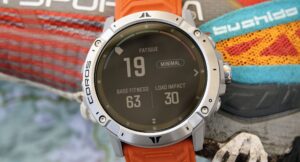

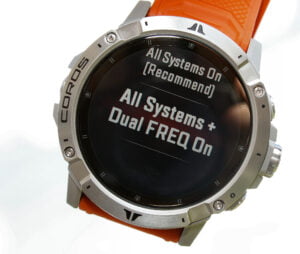









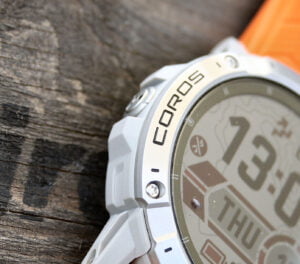


I’m going to be keeping my eyes peeled for your comments about GNSS performance both re accuracy and re actual vs. claimed battery drain. Also interested in how the HRV functionality performs. However, I fear that the sheer size of the Vertix 2 will be a deal breaker for us small-wristed folk; the diameter of that beast is literally larger than my wrist is wide! I hope the company will come up with a 2s version at some point that’s closer in size to the original Vertix. And until then, the prospect of getting maps on said original Vertix makes me very happy, because maps were why I was originally going to get a Fenix 6X. In the event, it was a choice between maps and full native Stryd integration and Stryd won out, but I do have a hankering for onboard maps as well. 😁
yes it’s big!
such watches are sometimes worn in cold climates outside thicker clothing
Wow, they caught up on maps, music and widget glances and are ahead with ecg, hrv, multi frequency gps, multiple input support (touch screen and buttons), battery life and marketing (usage of Eluid).
Still behind Garmin on mapping (no routing/navigation), music (no streaming service) and widgets/widget glances (no 3rd party etc). Not even close to being even.
And they are roughly even (not ahead) on ECG/HRV (ECG not acruelly implemented, HRV has been on Garmin for years) and GPS (dual frequency should be better, but at least so far isn’t).
And the input interface looks good on paper but it almost universally hated for sports.
Add to that the problems with the HR sensor and there are some serious problems.
The only area where this clearly beats the Fenix 6 is battery life.
i take the point
there are other features where coros leads.
as i say, my opinion is that the price should be lower. many forget that a titanium+sapphire lens typically adds a considerable premium to the rrp. those sorts of things tend to get overlooked when comparing a tick box list of features.
I’ve been trying out a Pace2 (free hand-me-down from wife who didn’t like it (who went from Polar, to Garmin, to Coros, and now to Apple Watch, LOL)… next to my Polar m430 and v800s for the past few weeks. Can’t stand the crown, but feature-wise it “does everything” nearly, in a compact package, it’s too small for my liking, and I’m likely to destroy it long-term if I kept it, (need the sapphire glass) but I’ve been eyeing the Apex Pro or ideally a successor to it, as a possible “next-watch”, depending on if Coros fixed their back-end (actually had one that was not just existent but added good value,) or released an amazing successor product and I can fully commit to Training Peaks for a useful backend.
I’m literally the target market for this watch, willing to spend the money for a rock solid reliable, tough, fully featured device, and been waiting for something ALMOST exactly like this.
I lost 100% interest in this, or any future Coros products if it continues, the moment I saw “dropped ANT+”. As a triathlete, and someone that does a lot of indoor training with Zwyft, power meters, Varia radar, hr strap of course, etc recording… if their future direction (indicated by this “pinnacle” product) is indicating no ANT+… then I need no longer consider Coros.
I already have to deal with/live with Polars “BT-only” limitations, but Polar has far superior usability (5 buttons is the way nature intended sports-watches to work, the crown sucks, after weeks of using it, I like it LESS every time I have to touch it), MUCH better metric accuracy (in particular calorie counts, calculations/tracking, Pace 2 is way overstating both workouts and daily tracking compared to my Polar devices, which I know historically are reasonably on the money (some complain about Polar being “higher than” fitbit, Garmin, etc… yikes, don’t try a Coros!!!)…
The hardware from a feature/performance perspective is great (other than UI/buttons mentioned above)… I feel like it does everything functionally quite well… but it doesn’t do ANYTHING better than Polar does, except support ANT+ directly… GREAT!!! But no, now they are dropping it… WHAT???? That’s the ONLY way they can steal any share from competitors for a $600-700 price point!!!! That’s like “here’s our Mercedes-class car… except we aren’t putting in the leather, you get velour for your seats and interior, but the price is the same, and we are much less well known, and have little dealer/service support (no back-end, which Coros has pretty much no back-end, a-la Flow or Connect).
That was the most brain-dead decision I have seen in my nearly 20 years in the sports-watch market. Polar’s obstinate defiance of ANT+ support, is somewhat understandable, given that they were “here first” and so they want things their way, even though it also costs them every day IMO (and even they caved to add compatibility with their HR sensors at least).
But Polar has an incredible infrastructure already in place to support athletes, and VERY good hardware/polish/usability (far superior to Coros, although not as “bell-and-whistley) even if they aren’t the prettiest or flashiest, and they live/breath “training” which for Coros almost seems an after-though (EvoLabs is a random collection of graphs tossed in meaningless fashion at you on a 5-6″ screen, and if you want training programs, good luck, go find some yourself or (hand-build them in the tiny screen) to figure out how to upload.
My dismay and one might even say “nasty” attitude at this point, are the result of sheer disappointment. This new watch has lots of cool things, and LOTS that can be improved “down the road” via updates… but without ANT+ capability, not a single bit of what else it can do matters (leaving Sony GPS made me so happy to see too .) It literally can’t do the ONLY significant thing Polar also lacks in past (still very good, v800 for example) or present products, which is support all the sensors needed for cycle training and other “high-sensor-count requiring some ANT+” activities, and that’s the only required feature necessary for me to consider any competitor to Polar (in other words, I’d go Garmin now, before I’d go Coros, and that’s a horrible thing for me to say, LOL).
Without that, why leave Polar (Or Garmin, Suunto, etc for that matter), which does EVERYTHING else in the training/health ecosystem to a far superior degree. Now my future decision becomes “Polar (stick with my 18 year partner), Garmin, Suunto, or other brand that supports dual-sensor tech for multi-sport/triathlon/indoor training needs”, Coros just went from my #1 “Might be my next premium watch” to not even on the list.
This makes me sad (but I’ll have a reasonably new Pace 2 to sell, now that I know I don’t need to keep getting used to it any further). Unless they release a model such as an Apex Pro 2 that DOES have ANT+, they’ve just cut a hunk of their market and given it away completely, no one serious about multisports (other than absolutely needing that battery life, and dedicated climbers of course which is the target I guess) is really going to look further at this versus Garmin for sure, and if a Polar or Suunto user, this isn’t going to pull them away either.
Thank you for your considered response!!
I guess I can’t take issue with any of what you say, perhaps I would only add that Coros are MUCH more likely to move this good package forward more quickly than Polar might.
I’ve not used ant+ for over 5 years now but I’m not a triathlete or cyclist (i just run mostly trails, Ultras and gym).
If I were to pick up triathlon from scratch, would i still suffer from the lack of ant+ or are new gadgets always supporting Bluetooth?
most new sensors will be dual ant+ and ble…if not all. so it wont be a problem for most people
there might be some cases where an indoor bike trainer setup would be better with ant+ where the source only has one BLE channel (eg latest wahoo kickr has 3 BLE channels…no probs there, mine only has one ble channel so could be a prob for zwift as zwift needs that channel). even then there will be a simple dongle purchase to solve the problem.
i think even the latest varia rear radar is BLE, not that this coros watch supports that profile.
the only major issue i think is if you have dual sided LR (dual source) power meters and my understanding is that only one source will be taken and then needs to be doubled. it gets complicated if such as power meter has a unified channel or not. suunto watches have (had?) this issue. I’ve not tested that, tho i guess i should. personally i reckon a single-sided power meter is perfectly fine and in any case its certainly cheaper!
plus you should use a bike computer for a bike…i guess that’s a less controversial opinion!! that said, the vertix 2 screen size is as big as some bike computers!!
Zzzzz huh what?. ZzZZzzzz
Duel GNSS potentially seems useful but the overall package is not great for the hyper and especially price and not ANT+. There is a lot of potentially here but a long way to go, those who are outdoor will see this as a improvement and i can see sales, those into fitness world and run/bike/swim/tri i can see them giving it a miss until the offering/price improves.
yep.
hopefully my article echoes what you say
Duel GNSS is the only thing here of note, and only because it’s the first. 4-6 months from now Garmin, Polar, Sunnto (maybe) will be showing off similar, if not superior versions of this.
Evolution tech of longstanding technology has to stop being sold as a “MUST HAVE!” thing. It’s just the natural evolution of GPS, not a whole different system.
“There is a lot of potentially here but a long way to go.”
I’m a current Apex Pro owner and have been for over a year now. I said the same thing about Coros out the gate, but after being with them for this long, it’s not looking like they’re ever going to reach that potential.
The Vertix 2 is an evolution watch built on a bare-bones ecosystem that has stagnated over the entire lifetime of Coros. Nearly everything offered here is offered on other devices and have been for years already. This is the Apple system where competitors release tech and features years ago, but hype their userbase on these things when they finally make it to their products. Coros also shot itself in the foot by not including Ant+ support. That’s a whole bunch of steps backward for a $700 watch the Garmin equivalent can do and so much more. And yes, I can’t stand I have to argue that Garmin is the better choice.
The app is possibly the worst of the bunch in terms of Sports watches and doesn’t seem to ever evolve. Coros has a very tiny 3rd party support window and shows interest in broadening that any time soon, and finally a questionable sports algorithm for practically everything they measure. Couple that with the bare minimum metrics being offered for that tracking, the Coros package is slim and is more focused on tuning minor points and spending years introducing newer things.
New hardware is always nice, but not when it’s built on a firm foundation that brooks little to no future growth, not when there are deeper, well-established companies out there offering everything you are, but more and maybe even better. I don’t see Coros surviving past three years from now, either closing down entirely or being subsumed by a bigger group.
What a great watch. I will definitely buy one. Outstanding 👍
So.. which feature did you call ground breaking that no one else does?
I was pretty excited about this release, since you pegged it as “groundbreaking” with features that even you probably wouldn’t have guessed.
What of this feature set even begins to qualify? The dual frequency GPS? If I’m not mistaken, this translates merely to slightly better GPS tracks. “Groundbreaking” sounds a lot more exciting than slightly better GPS.
Seems like all he wanted to do was to clickbait, as happens pretty often lately. It’s a shame though, this used to be a pretty interesting blog.
again, I guess you’re not interested in accuracy. lots of people are. we’re all different. embrace it.
there is zero point in attracting a relatively small number of people to read about peripheral manufacturers like polar, suunto and coros. the VAST majority of traffic is in all matter Garmin.
yes I know there are adverts in this article (I forgot to remove them). but I will literally make about 30 cents from them. I really am not doing it for that amount of money!
Since it is the first fitness wearable with dual frequency positioning it does pass the basic test for being groundbreaking. It may not be revolutionary, or market-changing, or necessarily of utility to all potential buyers, but Coros did get their offering to the market first.
Personally I don’t need to know where I am more precisely than the ~9 foot level of accuracy. What I do want is something close to that level of precision in far more circumstances than products are currently able to achieve. That desire alone is not enough to get me to buy a Coros, but they are certainly more interesting than they had been for me.
yep, fair comment
don’t forget it’s also important for those who rely on gps for speed, which is a fundamental reason to own a sports watch (or HR)
also interesting is the frequency of reporting of position. if they crank this up to 10hz in the future and if the processor can handle it then this will probably make bike navigation more responsive (at speed) , maybe also running (at speed but lower speeds)
Let’s be real and call it POTENTIAL accuracy. Dual frequency CAN and SHOULD give better accuracy. But results so far show no real-life improvement (actually a slight step back so far).
Hopefully COROS can improve this (like Garmin did with the Sony chipsetafter the disastrous initial performance) but it sure ain’t there yet.
my testing so far with running (other sports except mountaineering are irrelevant) on the **LATEST FIRMWARE*** show that it has good levels of accuracy. not the best but good. certainly as good as most garmins. certainly superior to all others AT TIMES.
in my experience at testing just about every GPS sports watch (ever) that’s pretty unheard of for a new chip new to the market.
but yes i agree with you that there is potential for it to be the best-ever. will it live up to that?…IDK.
yes it translates to multi-frequency gps
you will find that a significant number of people are interested in accuracy, I guess you’re not one of them 🙂
there must be over 100,000 stryd users…i assume most are interested in accuracy in some form, there are many more bike power meter owners and looking at dcr’s site the vast majority seem to be interested in accuracy.
as a runner i’m interested to know how fast i am running…kinda important in my opinion. that’s just me i guess.
Fair enough – you’ve convinced me. And I’m serious here. I have clearly not given gps accuracy a lot of thought. I suppose I felt about it like I do about scales: I don’t care if they are accurate, just consistent. So with GPS, I guess I didn’t care if it thought I was on the left or the right side of the street, as long as it consistently placed me in that same place so that I could compare improvement across runs. But perhaps lack of accuracy could have a big impact on even the consistency across runs – which I care a lot about.
I’d still hesitate to call it “groundbreaking” but that’s fine. Perhaps “unknown improvement to a key feature.” 😛
Thanks for your thoughts!
I was hoping for something cool but I can’t imagine buying this over a Fenix, seems the only real benefit is battery life, and I don’t mind plugging my watch in once every 10 days or so anyway.
The fake ECG support, MP3 only music (lol), and lack of NFC payments are killers for me – I actually use my watch to pay pretty frequently. And the price tag vs a Fenix is the final nail in the coffin. This watch is going nowhere until they cut the price.
fair point. I make the same comment about price as you.
accuracy, build quality, some nice features, battery life, native running power support….i think i covered most of those above. i guess with music it’s just the possibility of future streaming support you’d be buying in on if Spotify support your thing. at least coros are one step closer to that than suunto/polar
since this statement is in the future:
No Garmin Fenix watch currently has this as of Aug.21.
Is that a hint to an upcoming Garmin watch on that date?
well spotted! I was avoiding making my text redundant and covering myself!!
I’m assuming such a feature will be in the fenix 7. i dont know
I’m assuming the fenix 7 will be here before feb 2022. i dont know timescales.
this would be the best time for garmin to leak some fenix 7 details.
a good thought, but they won’t.
I dont think Garmin are worried about Coros yet.
they have simple reactions they can do for now like how they slashed the fenix 6x price over the weekend https://the5krunner.com/2021/08/15/garmin-fenix-6x-pro-200-off-lowest-ever-price/
Watched the event yesterday, bouth FR245 today, waiting for FR955 to be released.
Since there aren’t too many multi-band multi-constellation GNSS chips in the market and Coros has Chinese origins, I would bet that Vertix 2 uses the Airoha AG3335M/MN solution.
http://www.airoha.com.tw/webe/html/pro/index.aspx?kind=80&num=182&lv=2
Xiaomi Mi Watch and OnePlus Watch also use this GNSS chip.
ha !
nice one as always Chris. well found.
Confirmed as the: Airoha AG3335M model
So I’ve decided to buy one. Reasons for ME:
– I need a new watch. My Grit X does not hold up to my needs. Mainly battery but it also has really poor navigation features (I love everything else about it, though)
– Hardware is futureproof and super quality. I trust Coros to deliver software faster than any other player. I think it will have everything I ever wanted within a year. My only concern is that they add too much crap (which is the reason I shun away from Garmin)
– The app is critizized and I’m sure it will be a downgrade from the excellent Polar Flow. However, after transitioning from a 10K fast runner with intervals and specific training programs to a slow ultra trail runner, I don’t analyze my data that much anymore. Besides, I’ve found Polar’s recovery metrics isn’t really applicable to ultra people. I think keeping the app simple and prioritize good integrations with 3rd party sites is a good approach.
– I like the navigation as it is now. I have no use for turn by turn navigation and I’m really content with just breadcrumb trails. However, a nice simple implementation of dumb map might be something I can grow to like. Anyway, this will change with new software and I’m sure I will have to live with a little bit of crap like turn by turn navigation to be added 😉
– ANT+ is nothing I use or ever will so I’m just happy to see it go
So Vertix 2 really ticks all my boxes and I don’t find the price too disheartening either. Like it or not, consumers today pay not only for hardware. We also pay for additional software to be added for years to come (Polar really needs to learn this!)
thank you for the support!
i dont think you have to use ANY of the vendor’s platforms (garmin/polar/suunto/coros/wahoo)
i think there is a way to get data into polar flow using syncmytracks or some syncing software like that. ask me and i’ll look again.
try runalyze, that’s pretty awesome (apparently) in a free kinda way.
also strava, as you know. but then do the free stravistix/elevate add on for strava.
golden cheetah is free too…very complex stuff tho. useful if you use the inbuilt running power
I did once send all my Garmin data to Polar using SyncMyTracks. it works fine but Polar will disregard all imported sessions when calculating recovery and other training metrics, though.
Agree! A vendor-independant site makes it easier if you ever decide to change brand and there are plenty to choose from
yes good point
RunGap if you have an iPhone and there’s at least one recovery-capable device connected to your Polar account. At least, when send my Garmin, COROS, and Suunto workouts to Polar, I get full training load metrics generated properly as if the workout came from the Polar watch.
PS RunGap isn’t free, but the price is worth it if you are maintaining your data across multiple vendors.
It *does* do turn by turn navigation, just its not ‘automated’ route finding navigation.
I have an Apex Pro, define my routes in Plotaroute, adding ‘directions’ at junctions etc which get exported as WayPoints. Coros support these, (and call them ‘CheckPoints’).
As and when you reach the Waypoint, a little alert notification pops up (irrespective of what data screen you’re on) which has the breadcrumb for where you are, along with text that says “Reach XXXX” where XXXX is the label you’ve given the WayPoint. So I just label “R”, “L”, “Fork L”, “Straight”, “Take Path”, “L then R” etc, at places where I think I’ll need instructions.
It works fantastically – and will be even more useful for me when the Topo maps come to Apex Pro, to get that map context…sometimes especially on a long route that you can’t fully remember from plotting, you’re not *quite* sure what “L” meant…did it mean take the road left, or did it mean hop over the stile into the field on the left?!
Ran 30k with turn by turn directions on my Coros on Saturday, didn’t scroll to the breadcrumb screen a single time, just relied on the directions. 🙂
Actually, this is exactly how Suunto implements their TbT navigation as far as I know! The only difference here is that Suunto automates the waypoints and directions being added to your GPX route.
Hence, the lifehack: create a route in Suunto app, export it by copying the link to the phone’s clipboard, paste the GPX link into a browser, and open the route, including TbT directions, in your COROS app. No need for Strava or Kamoot (and I’d say Suunto app is way better for creating routes on the go than either of these choices anyways)
Is there a reason you keep comparing Vertix 2 to Fenix 6 Pro when the right device would clearly be Fenix 6X Pro Sapphire or 6X Solar Titanium? Given the new COROS watch comes with 1.4″ 280×280 screen, PVD coated sapphire glass, and titanium bezel and cover, and 26mm QuickFit band?
Sure, it doesn’t match Garmin’s breadth of features on software side, but it is priced up to $200 cheaper.
Suunto 9 Peak retails for the same $699 with much smaller screen, way less battery, no dual-frequency all-GNSS GPS, no EKG level HRV, no ANT+, no maps, no music, no strength training/muscle heatmaps, no structured workouts, no WiFi for OTA firmware updates (and potentially more), incomplete running power support, and very light physio with no race predictions.
i thought i was on the whole (ok the title doesn’t say that).
let me re-read it…brevity sometimes wins over
Well, you are hardly the only person who’s bringing up the price in comparison to Garmin Fenix. I tend to agree $699 is quite a steep ask given COROS inability to have features truly complete, without various bugs and caveats. That being said, a correct point of reference is $899 in Garmin world, form- and materials-wise, and $200 can go a long way to justify the gap between COROS and Garmin devices. Not to mention nobody seems to mind a certain Suunto 9 Peak for the same $699. A terrific device, with its own set of strengths, but without half of not more of the Vertix 2 features.
indeed so.
Nick, I re-read the review and changed one of the titles to reflect pro sapphire (thank you!). all the other references (15 iirc) i think are correct. they don’t necessarily refer to a comparison to the pro sapphire
anyone else reading this: Please *DO* point out errors or inconsistencies, there’s a whole lot of words here on this site and it’s REALLY hard for one person to get every single one correct 😉
I guess the best comparator would be
1. Garmin 6X non-pro sapphire….but that doesn’t exist
2. Enduro non-solar sapphire…but that doesn’t exist
I guess you could say that coros has therefore differentiated Vertix 2 rather nicely!
Great review, thank you.
quick question:
can you use this watch if you don’t have internet access?
I’m asking because with Garmin, if you don’t have internet, you cannot access the watch using the Connect app. yes, the watch (Garmin) will collect the data but without internet you cannot access it.
With Coros, can you?
Thank you.
yes.
i recorded a workout on the watch
i turned off the wifi on my phone
i synced the watch to the phone
the workout was synced to the phone and i could view the workout details
however aggregate data wasn’t updated
ie just the individual workouts can be seen and they are not updated on trend charts and the like
Thank you.
Just got my Vertix 2 in yesterday. Been interested in Coros for a while, and wanted to compare against my Enduro. Biggest disappointment with the Vertix 2 is the screen – still has that blue-ish, bad contrast screen we’ve seen in previous generation watches. Was hoping all the 1.4″ screens were ‘good’, but maybe it’s not the screen but how the backlight is implemented.
Biggest surprise, the GPS accuracy. Most reviews didn’t seem too impressed. I run in pretty easy GPS conditions, and my first run with ‘All on’ satellites but NOT dual frequency, the GPS track was crazy good. No wobble, doesn’t look like a kinda jagged line and it put me right where I was running. Compared versus the Enduro track it was a world of difference. Now does a nice looking GPS track really matter? Hmmm.
Vertix 2 is also smaller. They say 50.3mm but I’d put it between 49 and 50mm. Lug to lug is 53mm, compared to 56mm for the Enduro. Vertix is noticeably thicker though.
HRV test is good, I’ve been waiting for someone other than Polar to give me some HRV data. I like the running data more than Garmin, everything is more concisely laid out in the Coros app versus scattered across a lot of screens in Garmin Connect.
Overall impressed, but the screen compared to the Enduro is a big disappointment. And not sure if I will miss Body Battery, Stress, Sleep Score and trying to manage those things using Breathing exercises – none of which Coros supports.
hey there, ty for the feedback
you’ve prompted me into testing without dual frequency
for the hrv stuff try hrv4training….#GoldStandard…all the rest of the competition to that has a lot of smoke and mirrors
Looking forward to see if you find anything different, I was surprised how good the results were. Wish I could attach a screenshot here.
And thanks for the hrv4training rec!
Is it simply not because the screen is sapphire?
Waiting for mine to arrive.
Garmin Enduro has POWERGLASS which comprises Corning Gorilla Glass DX. Yes it should appear different
Gorilla Glass DX is more clear than sapphire, less reflections for sure. But I’m talking about the color of the display with the backlight on. I’ve seen both ‘good’ and ‘bad’ displays on the sapphire Garmin Fenix 6. Not sure if I can post a link here, but below from Garmin forums shows the difference. The Vertix 2 (mine at least) looks like the screen on the right. My Enduro looks like the screen on the left.
https://forums.garmin.com/cfs-file/__key/communityserver-discussions-components-files/431/IMG_5F00_20191026_5F00_133521.jpg
Ah, I see. Yeah, the blacker background does looks better. As long as it’s only with backlight, I won’t be too bothered by that, though
Thank you for the awesome review/comparison!
You say: “Whilst the Suunto 9/9Peak hardware package is probably better..” Could you please elaborate, as how is it better, etc?
Thanks again!
higher quality materials and improved internal components
Nice review! How is the lap screen layed out on Vertix? In Garmin 945 you can customize the data shown on lap screen, for instance you can see lap average heart rate and lap speed. Can you do the same thing on the Vertix 2?